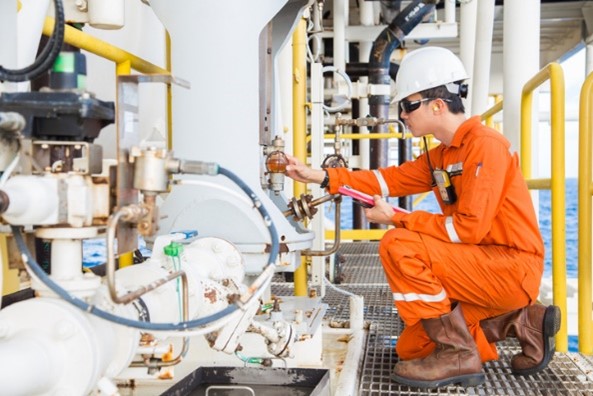
In-Service Piping, Pressure Vessels, and Storage Tank Inspection
Inspection Code: In-service Inspection, Rating, Repair, and Alteration of Piping, Vessels, and Tank Systems
Introduction:
Regular in-service inspections of piping, tanks, and pressure vessels are required to ensure their safety, dependability, and compliance with industry standards. This comprehensive step-by-step guide will assist you in comprehending the complexities of performing in-service inspections in accordance with the API 570, API 510, and API 653 Inspection Code. You will gain the knowledge and skills required to perform thorough inspections, ensure quality assurance, and maintain compliance by following these detailed instructions.
Step 1: Inspection Preparation and Planning
Determine Inspection Frequency:
To determine the appropriate inspection frequency, consider factors such as service conditions, corrosion rates, process requirements, and previous inspection history.
Consider the importance and potential risks associated with the piping, tanks, and pressure vessels.
Examine Previous Inspection Reports:
Examine previous inspection reports for trends, degradation mechanisms, and areas that require special attention.
This data can be used to plan the current inspection, prioritize areas of concern, and determine the scope of work.
Step 2: Visual Examination
External Examination:
Perform a thorough visual inspection of the piping, pressure vessels, and tanks, paying special attention to external factors such as leaks, corrosion, erosion, mechanical damage, and support integrity.
Pay special attention to vulnerable areas such as pipe connections, welds, and sections exposed to external forces or environmental conditions.
Internal Examination (If Accessible):
Inspect the internal surfaces of the piping, pressure vessels, and tanks whenever possible, using appropriate inspection tools or by entering through openings, manholes, or cleanouts.
Examine the system for signs of internal corrosion, deposits, pitting, scaling, and erosion that could compromise its integrity.
Step 3: Non-Destructive Testing (NDT)
Ultrasonic Thickness Testing (UT):
Use ultrasonic thickness gauges to determine the remaining wall thickness of the pipes, pressure vessels, and storage tanks.
Compare the measured values to the minimum required thickness specified by the relevant codes and standards.
Magnetic Particle Testing (MT):
Use magnetic particle testing to detect surface and near-surface defects in ferromagnetic materials such as cracks, laps, seams, and inclusions.
Dye Penetrant Testing (PT):
Use liquid penetrant testing to detect surface discontinuities in non-porous materials, whether ferromagnetic or non-ferromagnetic.
Radiographic Testing (RT):
Use radiographic testing to detect internal defects, such as cracks, voids, and inclusions, in welds and base materials.
Step 4: Pressure Testing
Hydrostatic Testing:
Perform hydrostatic testing to determine the structural integrity of the piping, pressure vessels, and storage tanks.
Fill the system with water and pressurize it to the specified test pressure in accordance with relevant codes and standards.
Pneumatic Testing:
In cases where hydrostatic testing is not feasible, pneumatic testing with air or inert gas may be used, but with additional safety precautions.
Step 5: Corrosion Assessment
Corrosion Rate Calculation:
Calculate the corrosion rate based on previous inspection data and current thickness measurements.
Use this information to predict the remaining life of the equipment and schedule future inspections.
Corrosion Mechanism Identification:
Identify the specific corrosion mechanisms affecting the equipment, such as general corrosion, pitting, crevice corrosion, or stress corrosion cracking.
Step 6: Documentation and Reporting
Inspection Records:
Maintain detailed inspection records, including inspection dates, methods used, findings, and recommendations.
Document all defects found, their locations, sizes, and severity.
Compliance Verification:
Verify that the inspection activities comply with the applicable codes, standards, and regulatory requirements.
Ensure that all inspection personnel are qualified and certified according to the relevant standards.
Step 7: Follow-up Actions
Repair and Mitigation:
Based on the inspection findings, determine the necessary repair, replacement, or mitigation actions.
Prioritize actions based on the severity of defects and the risk they pose to safety and operations.
Future Inspection Planning:
Use the inspection results to update the inspection plan and schedule for future inspections.
Adjust inspection intervals based on the actual condition and performance of the equipment.
Conclusion
Following this comprehensive step-by-step guide for in-service inspection of piping, pressure vessels, and storage tanks in accordance with API 570, API 510, and API 653 will help ensure the safety, reliability, and compliance of your equipment. Regular inspections, proper documentation, and timely follow-up actions are essential for maintaining the integrity of these critical systems.
Remember to always follow the specific requirements of the applicable codes and standards, and ensure that all inspection activities are performed by qualified and certified personnel.